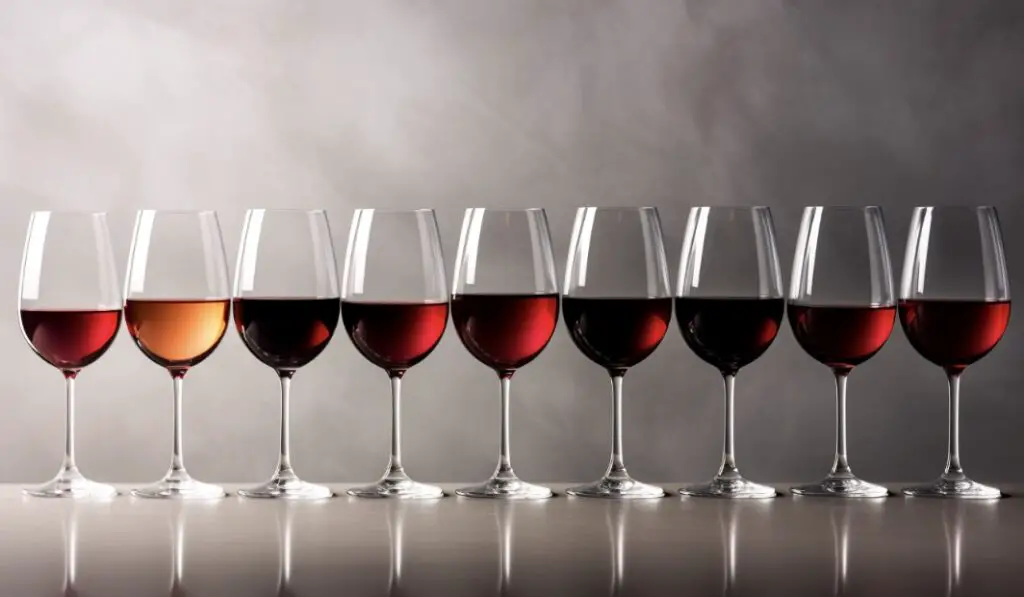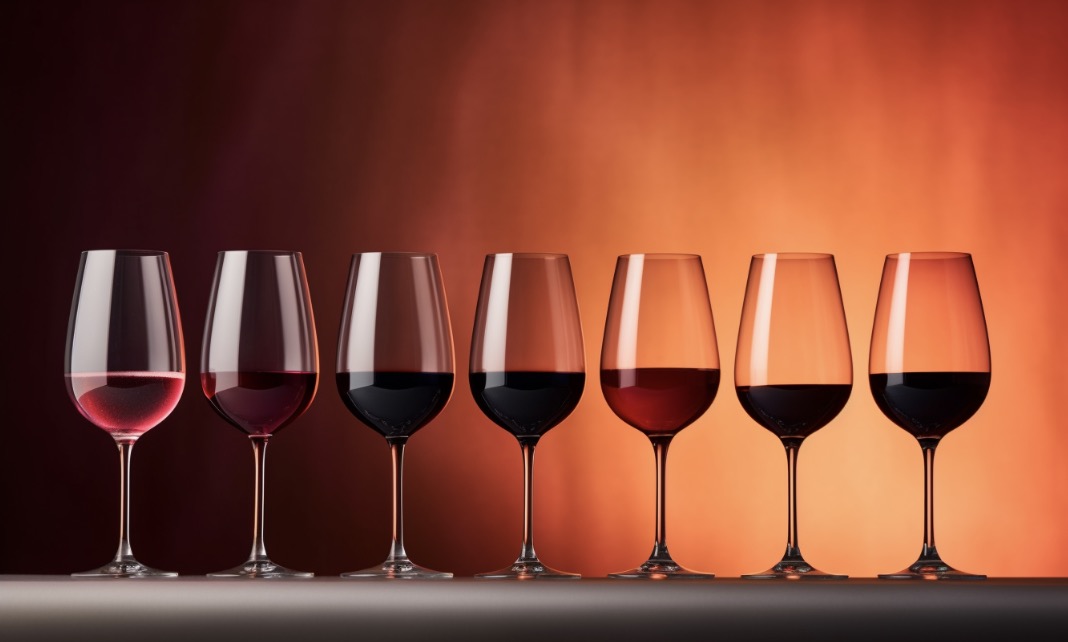The darkest red wine is Malbec, a full-bodied red wine known for its deep color, intense fruity flavors, and velvety texture. It is often blended with other varietals to create complex and balanced wines. In this blog post, we’ll explore the world of Malbec wines, their unique characteristics, variations, and food pairings. We’ll also delve into other red wines with dark hues and bold flavors.
The Origins of Malbec
Malbec is a grape variety originally from France, where it has been cultivated for centuries in the region of Cahors. The grape gained prominence in Argentina, where it found the perfect growing conditions in the high-altitude vineyards of Mendoza. Today, Argentina is the largest producer of Malbec wines, and the grape has become synonymous with the country’s wine industry.

The French Malbec
In France, Malbec is known as Côt and is primarily grown in the Cahors region. Here, the grape is blended with Merlot and Tannat to create dark, inky wines with powerful tannins and a distinctive rustic character. These wines are known as Cahors Malbec and are typically aged in oak barrels to soften the tannins and enhance the flavors.
The Argentine Malbec
Argentine Malbec is the most well-known expression of this grape variety. In the high-altitude vineyards of Mendoza, the grape benefits from the intense sunlight and cool nights, which result in wines with a deep color, ripe fruit flavors, and smooth tannins. Argentine Malbec wines are known for their notes of black cherry, plum, and blackberry, as well as hints of chocolate, leather, and spice.
The spectrum of red wine colors: fifty shades of Bordeaux
The spectrum of red wine color: fifty shades of Bordeaux
Red wine is renowned for its rich and varied color palette, with shades ranging from pale ruby to deep, dark crimson. One of the most famous and widely recognized red wine colors is Bordeaux, named after the renowned wine region in southwestern France. The term “Bordeaux” has become synonymous with high-quality red wines that exhibit a wide range of hues, each with its own unique charm.

The color of red wine is primarily derived from the grape skins during the fermentation process. As the grape juice interacts with the skins, it absorbs pigments known as anthocyanins, which give the wine its red color. Additionally, other factors such as grape variety, winemaking techniques, and aging can influence the final color of the wine.
Bordeaux red wines encompass an extensive spectrum of shades, often described as the “fifty shades of Bordeaux.” Let’s explore some of the most common colors found in these wines:
- Ruby Red: At the lighter end of the Bordeaux spectrum, ruby red wines display a vibrant and translucent hue. They are typically young wines with a fresh and fruity character, showcasing shades of bright red or crimson.
- Garnet: Moving towards the middle of the spectrum, garnet-colored Bordeaux wines exhibit a deeper red hue, reminiscent of pomegranate. These wines often indicate a level of maturity and complexity, with flavors evolving beyond primary fruit notes.
- Brick Red: As Bordeaux wines age, they can develop a brick-red color, resembling the color of terracotta. This shade suggests a significant amount of oxidation and extended bottle aging, resulting in nuanced flavors and aromas.
- Mahogany: Some Bordeaux wines, particularly those with extended aging, can evolve into a rich mahogany hue. These wines have spent considerable time in oak barrels and often exhibit tertiary aromas and flavors, with notes of leather, tobacco, and dried fruits.
- Inky Purple: On the darker end of the Bordeaux spectrum, you’ll find inky purple wines. These wines are usually young and often associated with fuller-bodied styles. They boast intense flavors, deep concentration, and a robust tannic structure.
- Deep Crimson: Deep crimson Bordeaux wines display a saturated, dark red color, sometimes bordering on black. These wines are often full-bodied and can be associated with powerful tannins, rich fruit flavors, and long aging potential.
- Violet: In some cases, especially with younger Bordeaux wines, a vibrant violet color can be observed. This shade hints at the wine’s youthfulness and primary fruit characteristics, offering a delightful visual representation of freshness.
It’s important to note that the color of Bordeaux wines can vary not only based on age but also due to the specific grape varieties used in the blend. Bordeaux wines are typically made from a combination of Cabernet Sauvignon, Merlot, Cabernet Franc, Petit Verdot, and Malbec, each contributing to the final color profile.
Appreciating the spectrum of Bordeaux red wine colors adds to the overall experience of enjoying these esteemed wines. From the delicate ruby hues to the profound depths of inky purple, each shade tells a story about the wine’s origin, age, and characteristics, making Bordeaux a captivating and diverse region for red wine enthusiasts.
Other Dark Red Wines
While Malbec is the darkest red wine, there are several other red wines that boast dark, rich hues and bold flavors. Some of these include:
Petit Verdot
Petit Verdot is a grape variety from Bordeaux that is often used as a blending grape to add color, tannins, and structure to red wines. On its own, Petit Verdot produces deeply colored wines with flavors of black fruit, violet, and spice.
Tannat
Tannat is a grape variety from the Madiran region in southwest France. Known for its high tannin content, Tannat wines are inky and dark, with flavors of blackberry, plum, and dark chocolate, along with earthy, spicy notes.
Sagrantino
An Italian grape variety, Sagrantino is grown primarily in the Umbria region and produces dark, full-bodied wines with bold tannins and flavors of black fruit, leather, and tobacco.

Food Pairings with Dark Red Wines
When it comes to pairing food with dark red wines like Malbec, it’s essential to consider the wine’s bold flavors and tannins. Here are some suggestions for food pairings:
- Grilled or roasted meats, such as beef, lamb, or game, complement the rich flavors and tannins of Malbec wines.
- Hearty dishes like stews and casseroles are a great match for the robust flavors of dark red wines.
- Strong cheeses, like blue cheese or aged cheddar, can stand up to the powerful flavors of Malbec and other dark reds.
Conclusion
In conclusion, the darkest red wine is the Malbec, known for its deep color, intense fruity flavors, and smooth tannins. Other dark red wines worth exploring include Petit Verdot, Tannat, and Sagrantino. When enjoying these bold red wines, be sure to pair them with equally robust dishes to fully appreciate their rich flavors.
Here are 10 facts about the darkest red wines:
1. Malbec is the darkest red wine.
2. Malbec originates from France but gained prominence in Argentina.
3. French Malbec wines are known as Cahors Malbec.
4. Argentine Malbec wines are known for their deep color and ripe fruit flavors.
5. Petit Verdot, Tannat, and Sagrantino are other dark red wines.
6. Dark red wines are often characterized by their high tannin content.
7. High-altitude vineyards in Mendoza provide the perfect growing conditions for Malbec.
8. Dark red wines are often aged in oak barrels to enhance their flavors.
9. Pair dark red wines with grilled meats, hearty dishes, and strong cheeses.
10. Experimenting with different dark red wines can lead to discovering new and exciting flavor profiles.
FAQs
Which is darker Pinot Noir or merlot?
Pinot Noir is generally lighter in color compared to Merlot. Pinot Noir typically exhibits a lighter red color, ranging from pale ruby to translucent garnet. On the other hand, Merlot tends to have a deeper red color, ranging from ruby red to dark purple. However, it’s important to note that variations in color can occur depending on factors such as grape ripeness, winemaking techniques, and aging.
Is Pinot Noir sweeter than Merlot?
No, Pinot Noir is not inherently sweeter than Merlot. The sweetness of a wine is primarily determined by the amount of residual sugar left in the wine after fermentation. Both Pinot Noir and Merlot can range in sweetness levels, but this is dependent on the winemaking style and the specific wine producer.
Pinot Noir and Merlot are both red grape varietals, but they have distinct flavor profiles. Pinot Noir is known for its lighter body, higher acidity, and delicate flavors of red fruits, such as cherries and raspberries. Merlot, on the other hand, tends to have a fuller body, softer tannins, and flavors of black fruits like blackberries and plums.
The perception of sweetness in wine can also be influenced by factors such as fruit ripeness, alcohol content, and the presence of other flavor compounds. Therefore, it is essential to consider these factors when comparing the perceived sweetness levels of Pinot Noir and Merlot wines from different producers or regions.
Which is bolder Merlot or Pinot Noir?
Merlot is generally considered bolder than Pinot Noir. Merlot grapes tend to produce wines with a fuller body, higher alcohol content, and more pronounced fruit flavors. They are known for their rich, velvety texture and often exhibit notes of blackberries, plums, and chocolate. On the other hand, Pinot Noir is typically lighter in body with lower tannins and alcohol levels. It is known for its delicate and nuanced flavors, often showcasing red fruit notes like cherries and raspberries, along with earthy or floral undertones. While both wines can display complexity and intensity, Merlot generally offers a more robust and powerful profile compared to Pinot Noir.
Which is better Pinot Noir or Merlot?
As an expert brewer, I must clarify that Pinot Noir and Merlot are both grape varietals used in winemaking, not brewing. However, I can provide information about the characteristics and differences between these two red wine varietals.
Pinot Noir and Merlot are distinct grape varieties that produce wines with different profiles. The preference for one over the other is subjective and depends on personal taste.
Pinot Noir is known for its elegance, light to medium body, and delicate flavors. It typically exhibits red fruit flavors such as cherry, raspberry, and cranberry, with earthy undertones and a silky texture. Pinot Noir wines are often praised for their complexity and ability to express the terroir (environmental factors) in which they are grown. They pair well with a variety of foods, including poultry, pork, and earthy dishes.
Merlot, on the other hand, tends to produce wines with a fuller body and softer tannins. It offers flavors of black cherry, plum, and blackberry, often with hints of chocolate and herbs. Merlot wines are generally considered more approachable and fruit-forward compared to Pinot Noir. They pair well with red meats, tomato-based dishes, and a variety of cheeses.
Ultimately, the choice between Pinot Noir and Merlot comes down to personal preference. Some individuals may prefer the lighter, more delicate characteristics of Pinot Noir, while others may enjoy the fuller body and fruit-forward nature of Merlot. It is recommended to explore both varietals and experiment with different producers and regions to discover your own preferences.
What is the heaviest bodied red wine?
The heaviest bodied red wine is typically considered to be Amarone della Valpolicella. Amarone is a rich and full-bodied red wine from the Veneto region in Italy. It is made using a unique winemaking technique called appassimento, where the grapes are dried for several months before fermentation. This process concentrates the sugars, flavors, and tannins, resulting in a wine with a robust and full-bodied character. Amarone wines are known for their high alcohol content, intense flavors of dark fruits, and a velvety mouthfeel, making them one of the heaviest bodied red wines available.
Is Cabernet darker than Pinot Noir?
Yes, Cabernet Sauvignon is generally darker in color than Pinot Noir. Cabernet Sauvignon typically exhibits a deep, opaque ruby-red to purple color, while Pinot Noir tends to have a lighter, more translucent ruby-red color. The color variation is primarily due to the different grape varietals and their skin thickness. Cabernet Sauvignon grapes have thicker skins, which contain more pigments, resulting in a darker color extraction during the winemaking process.




